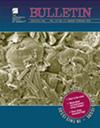When did the Indus River of South-Central Asia take on its “modern” drainage configuration?
IF 3.7
1区 地球科学
Q1 GEOSCIENCES, MULTIDISCIPLINARY
引用次数: 0
Abstract
For sedimentary archives to be used as a record of hinterland evolution, the factors affecting the archive must be known. In addition to tectonics, a number of factors, such as changes in climate and paleodrainage, as well as the degree of diagenesis, influence basin sediments. The Indus River delta-fan system of South-Central Asia records a history of Himalayan evolution, and both the onshore and offshore sedimentary repositories have been studied extensively to research orogenesis. However, a number of unknowns remain regarding this system. This paper seeks to elucidate the paleodrainage of the Indus River, in particular when it took on its modern drainage configuration with respect to conjoinment of the main Himalayan (Punjabi) tributary system with the Indus trunk river. We leverage the fact that the Punjabi tributary system has a significantly different provenance signature than the main trunk Indus River, draining mainly the Indian plate. Therefore, after the Punjabi tributary system joined the Indus River, the proportion of Indian plate material in the repositories downstream of the confluence should have been higher than in the upstream repository. We compared bulk Sr-Nd data and detrital zircon U-Pb data from the Cenozoic upstream peripheral foreland basin and downstream Indus delta and Indus Fan repositories. We determined that throughout Neogene times, repositories below the confluence had a higher proportion of material from the Indian plate than those above the confluence. Therefore, we conclude that the Indus River took on its current configuration, with the Punjabi tributary system draining into the Indus trunk river in the Paleogene, early in the history of the orogen. The exact time when the tributary system joined the Indus should correlate with a shift to more Indian plate input in the downstream repositories only. While the upstream repository records no change in Indian plate input from Eocene to Neogene times, a shift to increased material from the Indian plate occurs at the Eocene−Oligocene boundary in the delta, but sometime between 50 Ma and 40 Ma in the fan. Though further work is required to understand the discrepancy between the two downstream repositories, we can conclude that the tributary system joined the Indus trunk river at or before the start of the Oligocene.中南亚的印度河何时形成了 "现代 "排水系统?
要将沉积档案作为腹地演变的记录,必须了解影响档案的因素。除构造作用外,气候和古排水的变化以及成岩作用的程度等多种因素也会影响盆地沉积物。中南亚的印度河三角洲-扇形系统记录了喜马拉雅山的演化史,对陆上和近海沉积物库进行了广泛研究,以研究成因。然而,该系统仍存在许多未知因素。本文试图阐明印度河的古排水系统,特别是印度河何时形成现代排水系统,喜马拉雅山(旁遮普)主要支流系统与印度河干流的汇合情况。我们利用了旁遮普支流系统与印度河主干河有着明显不同的产地特征这一事实,印度河主干河主要向印度板块排水。因此,在旁遮普支流水系与印度河汇合后,汇合点下游储层中印度板块物质的比例应高于上游储层。我们比较了新生代上游外围前陆盆地和下游印度河三角洲及印度河扇矿床的大块 Sr-Nd 数据和锆英石 U-Pb 数据。我们确定,在整个新近纪时期,汇合点以下的储层中来自印度板块的物质比例高于汇合点以上的储层。因此,我们得出结论,印度河在造山运动历史的早期,即古新世时期就形成了目前的格局,旁遮普支流系统排入印度河干流。支流系统汇入印度河的确切时间应该只与下游储层中印度板块输入量的增加有关。上游储层记录的印度板块输入量从始新世到新近纪没有变化,而在三角洲的始新世-渐新世边界,印度板块的输入量却增加了,但在扇区的 50 Ma 到 40 Ma 之间的某个时间,印度板块的输入量却增加了。虽然还需要进一步研究才能了解这两个下游储存库之间的差异,但我们可以得出结论,支流系统是在渐新世开始时或之前加入印度河干流的。
本文章由计算机程序翻译,如有差异,请以英文原文为准。
求助全文
约1分钟内获得全文
求助全文
来源期刊

Geological Society of America Bulletin
地学-地球科学综合
CiteScore
9.30
自引率
8.20%
发文量
159
审稿时长
4-8 weeks
期刊介绍:
The GSA Bulletin is the Society''s premier scholarly journal, published continuously since 1890. Its first editor was William John (WJ) McGee, who was responsible for establishing much of its original style and format. Fully refereed, each bimonthly issue includes 16-20 papers focusing on the most definitive, timely, and classic-style research in all earth-science disciplines. The Bulletin welcomes most contributions that are data-rich, mature studies of broad interest (i.e., of interest to more than one sub-discipline of earth science) and of lasting, archival quality. These include (but are not limited to) studies related to tectonics, structural geology, geochemistry, geophysics, hydrogeology, marine geology, paleoclimatology, planetary geology, quaternary geology/geomorphology, sedimentary geology, stratigraphy, and volcanology. The journal is committed to further developing both the scope of its content and its international profile so that it publishes the most current earth science research that will be of wide interest to geoscientists.
 求助内容:
求助内容: 应助结果提醒方式:
应助结果提醒方式:


